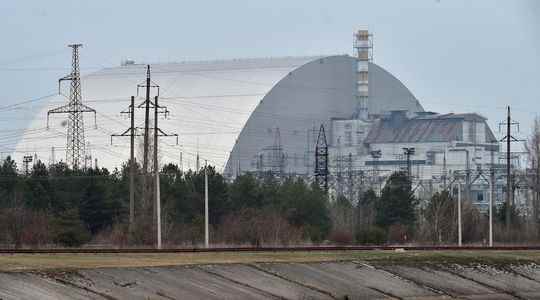To the human tragedy that is looming with the war in Ukraine could be added irreversible consequences for the environment and in particular for biodiversity. “Environmental destruction in wartime is usually only addressed as an afterthought. But the effects of fighting on air, water and soil quality are usually, and sadly, long-lasting,” analysis at this subject Richard Pearson, responsible for the environment and human rights of the NGO Human Rights Watch. According to him, the situation in Ukraine is all the more worrying because “the number of heavy industry sites, refineries, pipelines, disused mines and nuclear power plants is significant”. Four power plants equipped with fifteen reactors are notably listed in the country. “The risk that an environmental crisis is added to that of the human disaster is therefore major”, he deciphers.
There is of course no question of ranking. But remember that Ukraine is a nation rich in biodiversity. “According to government statistics, if the country occupies only 6% of the surface of Europe, it alone concentrates 35% of the fauna and flora of the continent”, figures the research director of the ‘Conflicts and Environment Observatory (Ceobs), Doug Weir.
Poaching and overexploitation of natural resources
The country has 39 national parks and fifty wetlands of international importance, included in the list drawn up by the Ramsar Convention. You can notably observe black storks, lesser spotted eagles and screaming eagles. In total, 150 species listed on the Red List of Threatened Species by the International Union for Conservation of Nature (IUCN) are present in Ukraine.
However, the use of weapons and certain warfare techniques can “damage the natural habitats of many species”, unfolds Doug Weir. The Ukrainian office of the World Wide Fund for Nature (WWF) thus carefully monitors the populations of protected species of large mammals (wolf, lynx and brown bear), bison and sturgeon. “Poaching also increases in times of war and the coping strategies of civilian populations can also lead to overexploitation of natural resources such as forests,” observes the research director of Ceobs.
Since 2014, the conflict in the occupied territories of Donbass already offered a glimpse of this. “With the war, the institutions that protect nature reserves have lost a lot of staff, detailed on this subject the United Nations Environment Program in 2018. This has led to an increase in violations of environmental law.” Invasive species “such as the jackal, the sunfish and the Asian lady beetle”, have also entered conflict zones and are now causing serious damage to the “In 2014 alone, the fighting led to the almost irreversible destruction of 479 hectares of forest”, noted the authors of the report.
Abandoned animals
The day after the Russian offensive, on February 25, the British NGO carried out a first inventory of destruction. On the subject of biodiversity, the researchers were particularly concerned about the first crossings of armored vehicles and troops observed in the fields and the release of chemical products, the state of the biodiversity of Snake Island after the bombardments, and the whether or not there are habitats for birds in the Black Sea Biosphere Reserve, affected by strong fires.
If some Ukrainians were also able to entrust their animals to the Odessa Zoo, as related Le Figaro, or if lions and tigers coming from a shelter for mistreated animals, near kyiv, could be evacuated to the Netherlands, as mentioned by the Dispatch from the South, the fate of many animals in captivity is unresolved. In particular at the kyiv zoo, where 3,300 animals of 420 different species are housed and which has already been targeted twice by rockets, according to The world.
Risks of industrial pollution
The list, compiled by the Observatory of Conflicts and the Environment, destroyed industrial sites potentially sources of toxicity, has since been extended: thermal power plants, fuel depot, an oil terminal, or even a lubricant warehouse. Doug Weir says he is particularly concerned about “the intensive and repeated bombardments of large cities, with concentrations of heavy industry and often close to homes”: “This will create serious pollution problems”, projects the researcher.
He draws a parallel on this subject with the clashes that have been taking place in the Donbass territories since 2014, “one of the most industrialized regions in Europe”, he recalls: “The bombardments were already targeting the dangerous industrial installations. The waters and soils of the Donbass are today polluted by the destruction of industries, the burning of ammunition and the flooding of coal mines. This is the same pattern that is repeated today in the other major cities in the country.
The current fears are also amplified by the threats of an oil spill on the southern coasts of the country, after the destruction of several ships. Although it is still too early to predict the final cost of the war for the environment, the post-war period is already shaping up to be a demanding period, according to the two specialists interviewed: “The reconstruction of Ukraine will also go through a detailed assessment of environmental impacts and the cleanup of heavily contaminated sites,” said Richard Pearson. “It will also be vital, adds Doug Weir, to strengthen the legal protection of the environment in the context of armed conflict.”
